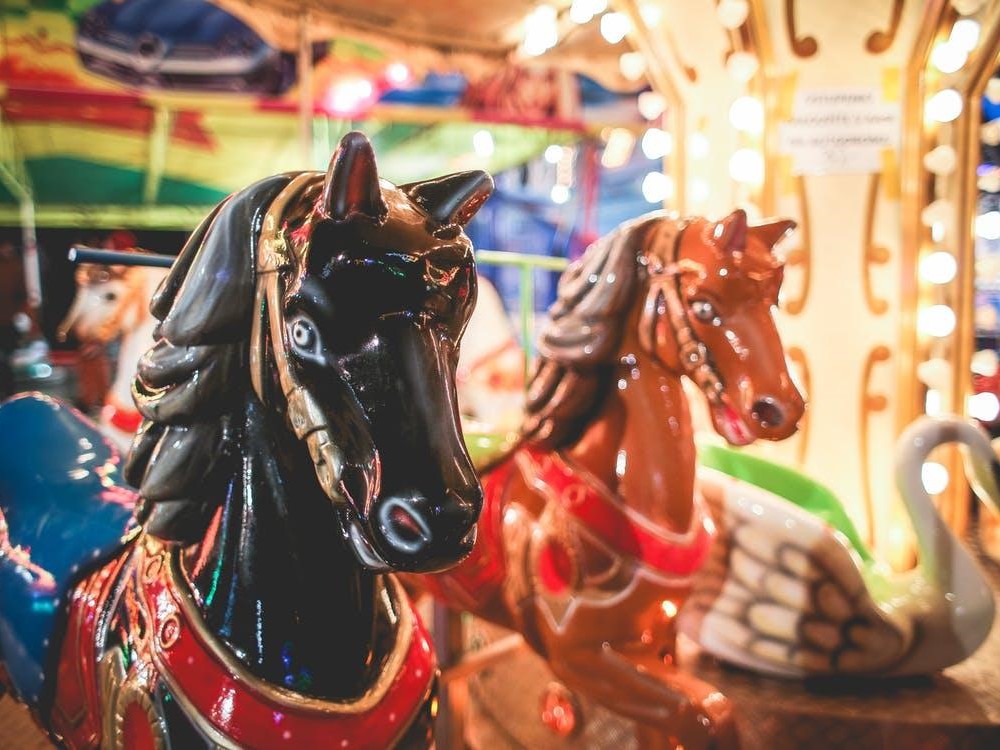
 We the Italians Editorial Staff
We the Italians Editorial Staff
Italian handcrafts: The Veneto amusement district, ride-making capital of the world
- WTI Magazine #190 Aug 09, 2025
-

 We the Italians Editorial Staff
We the Italians Editorial Staff
Between the quiet towns of Bergantino and Melara, tucked along the left bank of the Po River in the province of Rovigo, lies one of Italy’s most extraordinary industrial secrets: the Veneto Amusement Ride District. This global hub for amusement ride manufacturing is nestled in the rural heart of Polesine, a land where centuries-old artisanal traditions still thrive—and where fun is a serious business.
The roots of this unique district trace back to the early 20th century, when local bicycle mechanics chose not to emigrate like many others. Instead, they used their technical skills and creative spark to build the first fairground rides, laying the foundation for an entire industry. What began with small carousels soon expanded into complex traveling attractions. By the 1950s and '60s, with the rise of permanent amusement parks and advancements in mechanics and hydraulics, the area blossomed into a full-fledged industrial cluster.
Today, the district encompasses around 100 companies—including small artisan workshops and large manufacturers—and employs over 3,000 people, 600 of whom work in Polesine alone. Its annual turnover exceeds €250 million, over 90% of which comes from exports. These rides, often custom-built, are found in parks across Europe, Asia, and the Americas—from Disneyland Shanghai to Coney Island in New York, and even in places like Qatar and Turkmenistan.
But the district is more than just numbers. It’s a symbol of Italian ingenuity, where engineering meets art: they We don’t just build rides, they build emotions. Every ride is a fusion of design, mechanics, electronics, hydraulics, and imagination—where passion and creativity set them apart from competitors who offer only steel and plastic.
Bergantino’s transformation into the “Land of Amusement” began in 1929, during the Great Depression. That year, two bicycle mechanics, both named Umberto—Bacchiega and Favalli—unveiled Italy’s first electric bumper car track. It was a hit. Their invention allowed for immediate, year-round income, unlike farming, and launched the town’s ride-making legacy. Another pioneer, Albino Protti, later designed the first flying ride using a chain-lift mechanism. He developed the idea while interned in the U.S. during WWII, where he saw hydraulic systems in American trucks. Returning home, he patented the concept—laying the groundwork for what would become standard in amusement rides worldwide.
Over the decades, this industrial ecosystem expanded to include electricians, carpenters, fiberglass specialists, and designers. Many companies are family-run, passing down the craft through generations. Some, like the Cuoghi brothers, even specialize in lighting, giving rides their spectacular visual magic. Others design the ticket booths, caravans, and mobile homes essential to traveling shows. The district’s strength lies in its collaboration—a shared knowledge base and dedication to safety, often developed in partnership with the University of Padua and, surprisingly, even NASA.
While global competition has intensified, particularly from China, the district continues to stand out for its quality and innovation. Its survival through the COVID-19 pandemic and economic turbulence is a testament to its resilience.
A visit to Bergantino’s Museum of the Carousel reveals the full story, from the earliest rides to today’s mega-attractions. The district remains a shining example of how tradition and innovation can merge to produce joy—rides that not only spin and soar but bring families together and create unforgettable memories around the world.Fine modulo